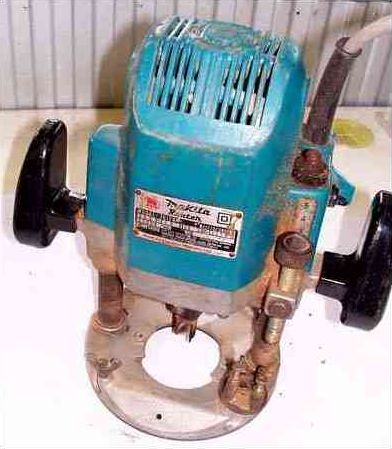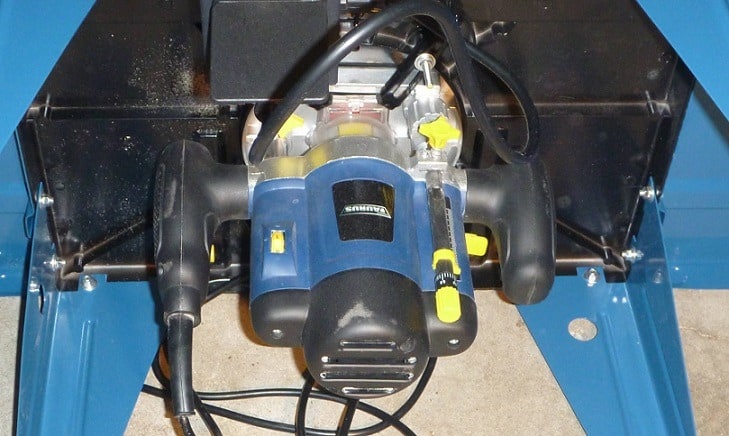How the Trim Router differs from the Modern Wood router
Most of us have heard about the trim router but we tend to overlook its value in a wood working shop. It is one of the tools that never get much use in most shops but yet is unique and strikingly versatile.
It is always awesome to get more than you bargained for in a tool. The trim router is one such tool that delivers just that. They are surprisingly lightweight, powerful, and mobile enough to be carried around unlike some other bulky routers in the workshop.
What is a Trim Router?
Trim routers are also referred to as laminate trimers. They were initially designed as one-purpose tools specifically for trimming laminate countertop material. When they first came into the picture they were not the most versatile tools but these days they play a wide variety of key roles.
They are now indispensable power tools in almost any workshop for the right reasons. They can be used in routing tasks and projects such as flush trimming, inlay cavities, rounding over edges, hardwood edging, rounding over edges, and much more.
Trim Router Functions
The trim can be used in handling a wide variety of tasks in the workshop including:
Specific Tasks
Task-specific trim routers are highly essential in any workshop. As a wood worker there are tasks that are done regularly and require different bits, for instance, specific forms of decorative edge-routing and others. In such a case, you find yourself changing and setting up bits from time to time. Since trim routers are cheap, you can buy three of them and use a different bit for each router. This way you avoid the hassle of bit-changing and save on the cost of buying a bigger router.
Excellent flutes
By installing a core-box or a round-nose router bit in a trim router, you can easily “rout out” perfect flutes. In case you lack a detachable edge guide (you can get standard with some small routers and for others it is optional), with a trim router’s small base you can easily set a straight edge near the cutting area. The routers that have square sub-bases easily follow the straightedge and therefore you can cut the flutes easily.

Routing shallow hinge mortises
With a trim router, routing shallow hinge mortises is a breeze. This is unlike a full-size router that normally tips or wobbles when the woodworker tries to balance it on the edge of a work piece. The trim router with its narrow base, low center of gravity and lightweight makes this process easy and hassle-free.
Perfect Inlay Grooves
Decorative inlays in any piece of work bring out your craftsmanship in any project. With a trim router you can get the best inlay grooves. It can help you get tighter and narrower surfaces. For example, aprons on table legs. In order to get perfect straight-edge grooves make use of an edge guide or simply follow a straight edge. A down cut spiral bit or a straight bit will help you achieve this.
Butterfly patches
A butterfly patch or a decorative patch can easily be designed using a trim router. They are used to conceal undesirable splits or knots in a piece of work. You can use the router to remove the material then cut a perfect butterfly patch in the affected part. Using a template in conjunction with a top-bearing bit or guide bushing and the trimmer, you can get this done with ease. When the trim router is used it normally feels like an extension of your hand since it is light and easy to handle.
Hole drilling
You can easily drill holes using a trim router just like with a standard plunge router. Using a template and the trimer, you can make shelf pin holes quite easily.
Cutting Joinery
Even though the trim router cannot take the place of true joinery cutters, they can be used for making small quick joints. They can be used in cutting laps, dadoes, rabbets, and other joint parts just like it is done with larger tools.
Edge Profiling
A trim router delivers perfect edge profiles. By making several careful passes, you can reach your required depth easily using this router. You can also make larger ogees, beading, coves, and edge shaping using laminate trimmers.
Others
A trim router can perform some other tasks such as the making of the sign, duplication of parts, veneer edge banding, and many others.

Pros and Cons of the Trim Router in Comparison to Modern Wood Router
The Pros
- Small and lightweight hence can easily be carried around.
- Perfect for intricate jobs that need steady and delicate touches.
- They have a cutting-speed advantage when compared to the regular router. It’s bit rotates faster.
- Delivers greater precision on small jobs.
- They can be used one-handed hence are easy to control.
- The trim router is cheaper and instead of buying one big regular router one can buy several trim routers equivalent to the price of one big router.
- Delivers cleaner cuts since it delivers more cuts per inch.
- Can fit areas where the larger router cannot. For instance, it can go into tighter corners where the bigger one cannot.
- Most trim routers come with square bases hence can run along a straight edge easily.
The Cons
- Lacks the power to handle heavy-duty tasks.
- The trim router may not be compatible with certain bit sizes.
- They are not suited for professional use.
- They are not durable as the regular wood router.
Summary
With a trim router in your workshop, you can handle practically any routing task done by the bigger routers. Even though they were initially designed specifically for cabinets and countertops, it is now widely used for various tasks in the workshop. It is preferred by most woodworkers due to the comfort and the easy-control it offers. The trim router is also much cheaper with the price of 2 or more trim routers being an equivalent of the price of one large router.

